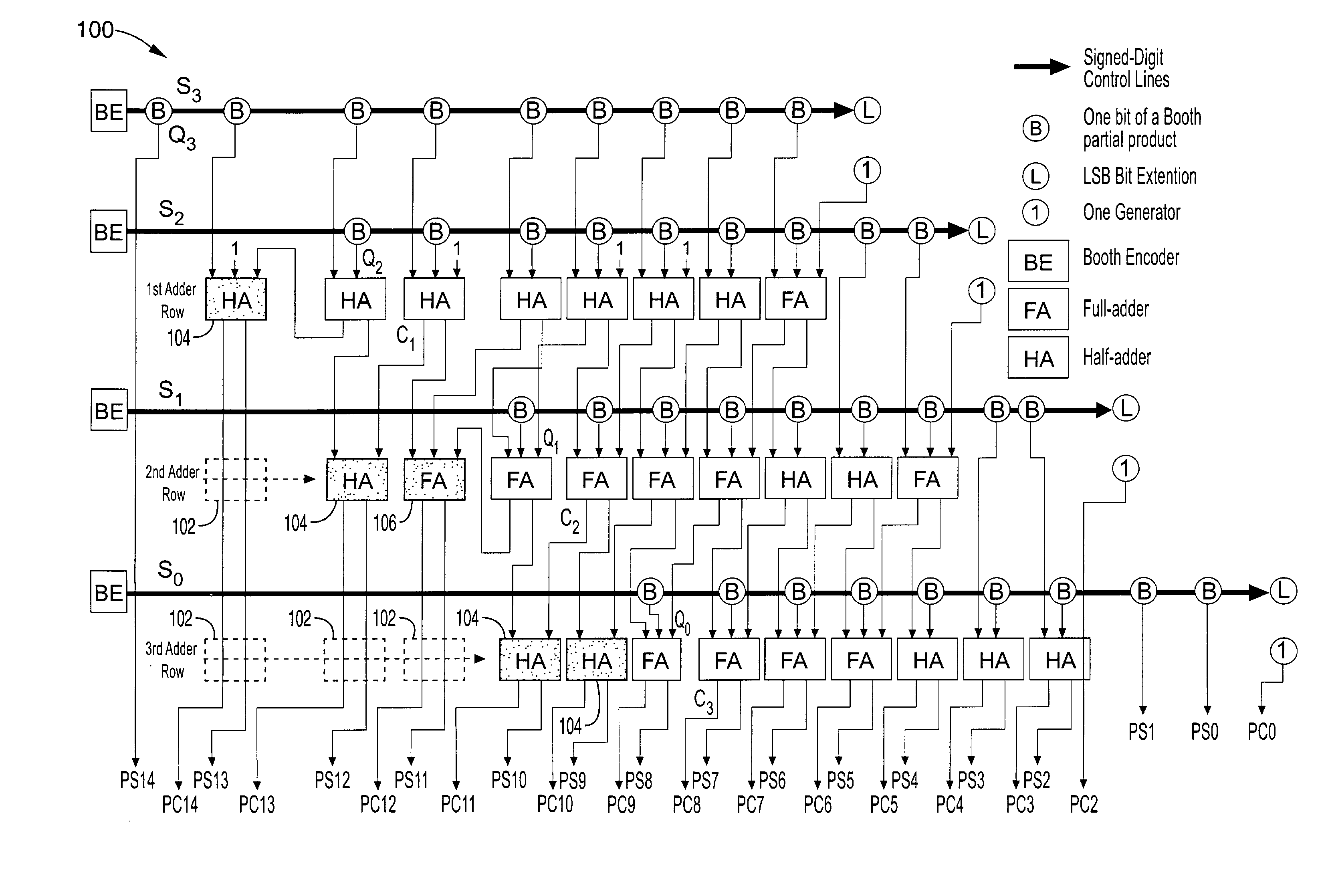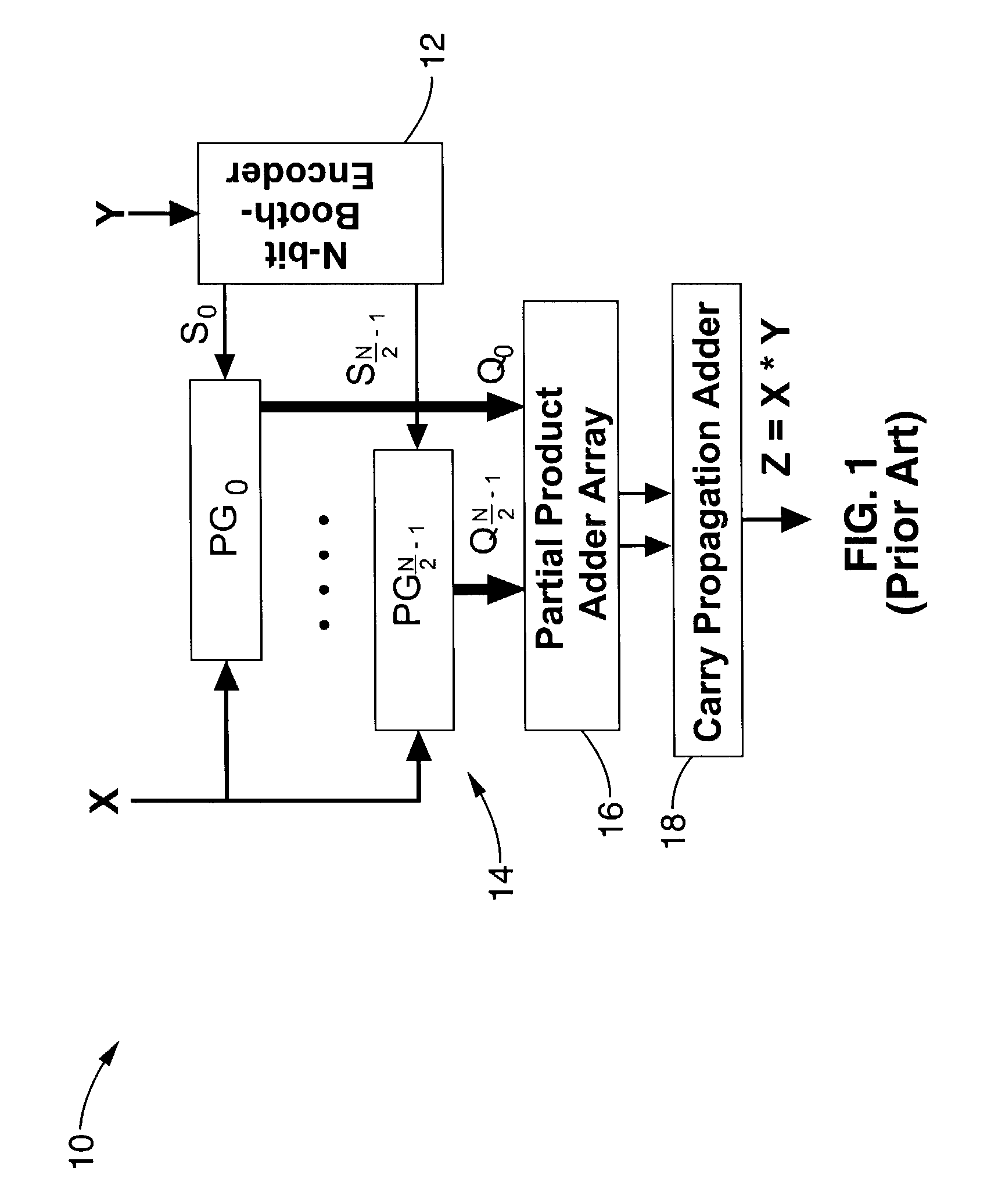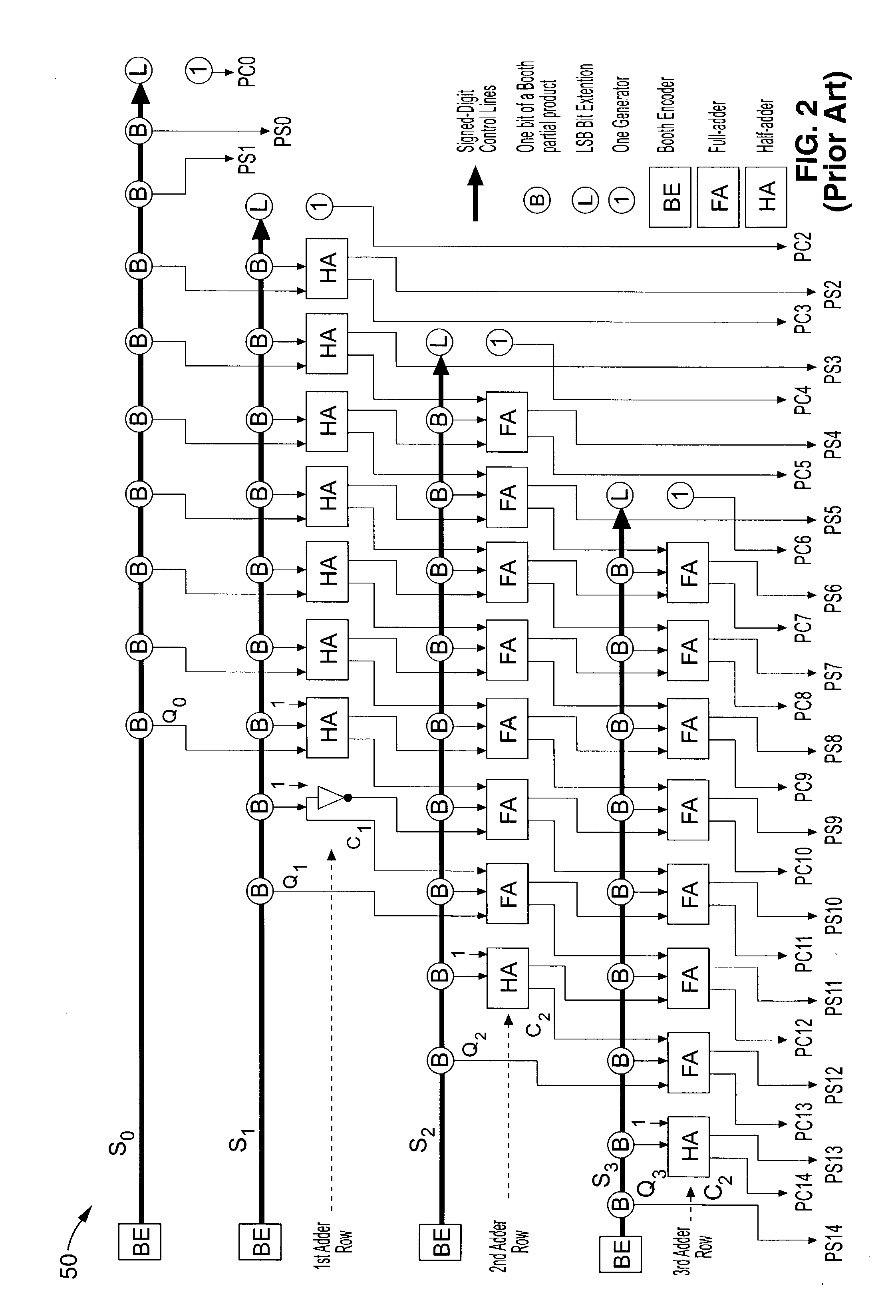Low-power Booth-encoded array multiplier
a low-power, array-encoded technology, applied in the field of array-encoded array-encoded array-encoded array-encoded architecture, can solve the problems of extra hardware, complexity and delay, counter-intuitive structure, etc., and achieve the effect of reducing the number of long signal paths and reducing the switching activity of the adder array
- Summary
- Abstract
- Description
- Claims
- Application Information
AI Technical Summary
Benefits of technology
Problems solved by technology
Method used
Image
Examples
example 1
[0035]Several multiplier circuits were implemented in a 0.5 μm technology using Synopsys Design Compiler™ for synthesis and Cadence™ for place and route. We used a set of well-characterized leaf-cells with state-dependent power dissipation, and the interconnect parasitic information was extracted from the layout. The circuits were simulated at a clock speed of 10 MHz in Verilog™, the toggle rates of all of the nodes were calculated, and the power dissipation was reported using Synopsys Design Power™. Our multiplier implementation did not include the final carry-propagation adder because its power characteristic has been well studied and it is not the focus of this invention.
[0036]We first simulated the power dissipation of the multipliers when the Booth-encoded input signal had a dynamic range smaller than its word-length. The other input of the multiplier was a random signal. The simulation results are summarized in Table 2 for a conventional multiplier (std.) and a multiplier acco...
example 2
[0037]The invention was also applied in a multiplexed FIR filter running at a clock speed of 10 MHz. The filter coefficients were Booth-encoded and the other multiplier input was a random signal. The power dissipation for various multiplier sizes is summarized in Table 3 and, as can be seen, an over 18% power reduction has been achieved.
[0038]Accordingly, the present invention comprises a low-power array multiplier which is preferably Booth-encoded for many applications. Its architecture is suitable for DSP applications where one of the input signals has a large dynamic range. We take advantage of the encoding property of a Booth encoder and modify the standard adder array to reduce the total switching activity inside the array. As a result, power dissipation is reduced.
[0039]Although the description above contains many specificities, these should not be construed as limiting the scope of the invention but as merely providing illustrations of some of the presently preferred embodime...
PUM
 Login to View More
Login to View More Abstract
Description
Claims
Application Information
 Login to View More
Login to View More - R&D
- Intellectual Property
- Life Sciences
- Materials
- Tech Scout
- Unparalleled Data Quality
- Higher Quality Content
- 60% Fewer Hallucinations
Browse by: Latest US Patents, China's latest patents, Technical Efficacy Thesaurus, Application Domain, Technology Topic, Popular Technical Reports.
© 2025 PatSnap. All rights reserved.Legal|Privacy policy|Modern Slavery Act Transparency Statement|Sitemap|About US| Contact US: help@patsnap.com



